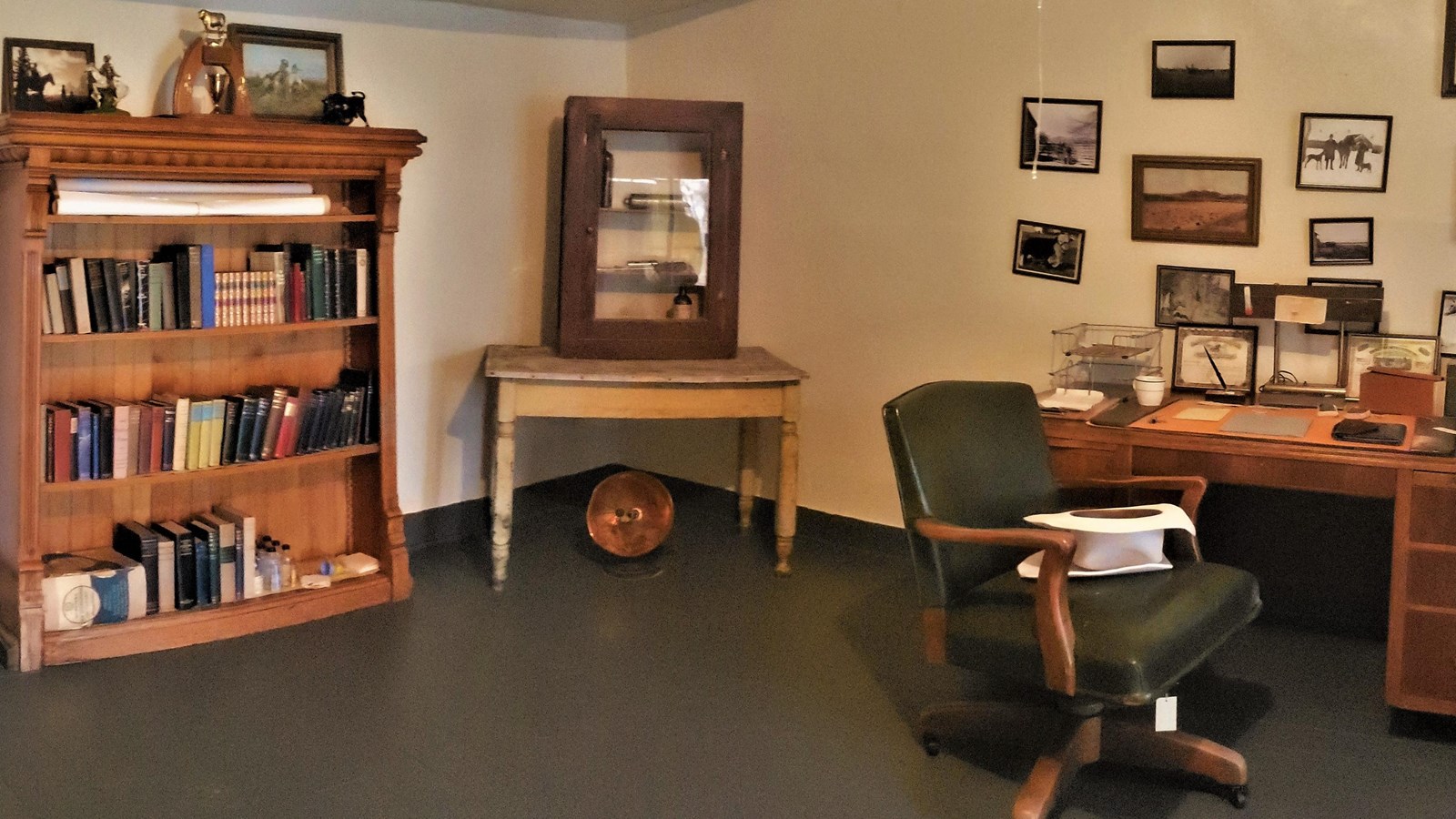Last updated: October 10, 2024
Place
The Warren Office

NPS/Grant-Kohrs Ranch
Accessible Sites, Cellular Signal, Historical/Interpretive Information/Exhibits, Information
Located in the bunkhouse row, this office was used by Conrad Warren, the grandson of Conrad Kohrs, in his work to manage the daily operations of the ranch from approximately 1935 to 1947, at which time Warren moved his office into his home.
The office is located in one of the sections originally built by Johnny Grant, the founder of the ranch. The exact date of construction and use of this building by Grant is undocumented, but part of the structure is visible in illustrations and drawings done by Granville Stuart and others when they visited Johnny Grant and Deer Lodge, starting in 1865. Over the years, bunkhouse row was lengthened with additional rooms for supplies and living space for cowboys and ranch hands.
Warren spent much of his childhood on the ranch with his grandfather, Conrad Kohrs, and his uncle, John Bielenberg. From these important role models, Warren learned about ranching, care and breeding of livestock, and business leadership. Following the death of Kohrs and Bielenberg in the early 1920s, the overall size and scale of ranching on the home ranch was drastically reduced. By 1924, the home ranch was approximately 1000 acres in size and most of the livestock was sold off.
In 1932, during the Great Depression, Conrad Warren became the manager of the ranch, and in 1935 he invested in repairs to the bunkhouse row. During these repairs, Warren converted this room into his office space. When Warren was hired as the ranch manager, he focused on making this an active ranch again by buying land to increase the size of the ranch, as well as rebuilding the livestock herds. Warren centered his livestock operations around Hereford cattle and Belgian draft horses. Warren was widely known for the quality of his livestock.
Other ranching operations directed by Warren included adding new buildings to the ranch, repairing fences and buildings, and upgrading the irrigation systems for water on the ranch. Warren also focused on animal care, and though he was not trained as a veterinarian, Warren was an amateur vet and kept syringes and medical supplies in this office, as well as in the thoroughbred horse barn vet office, which he might need to treat the livestock, as well as early work in the field of artificial insemination of the livestock.
By World War II, Warren started mechanizing the ranch with the purchase of tractors and other motorized farm equipment which took less manpower to operate than the older horse-drawn equipment. This transition to mechanized equipment helped Warren realize it was time to sell the Belgian draft horse herd since there were fewer people with the skills needed to operate draft horse teams, and ranchers and farmers were not using as much animal power in their daily operations.
